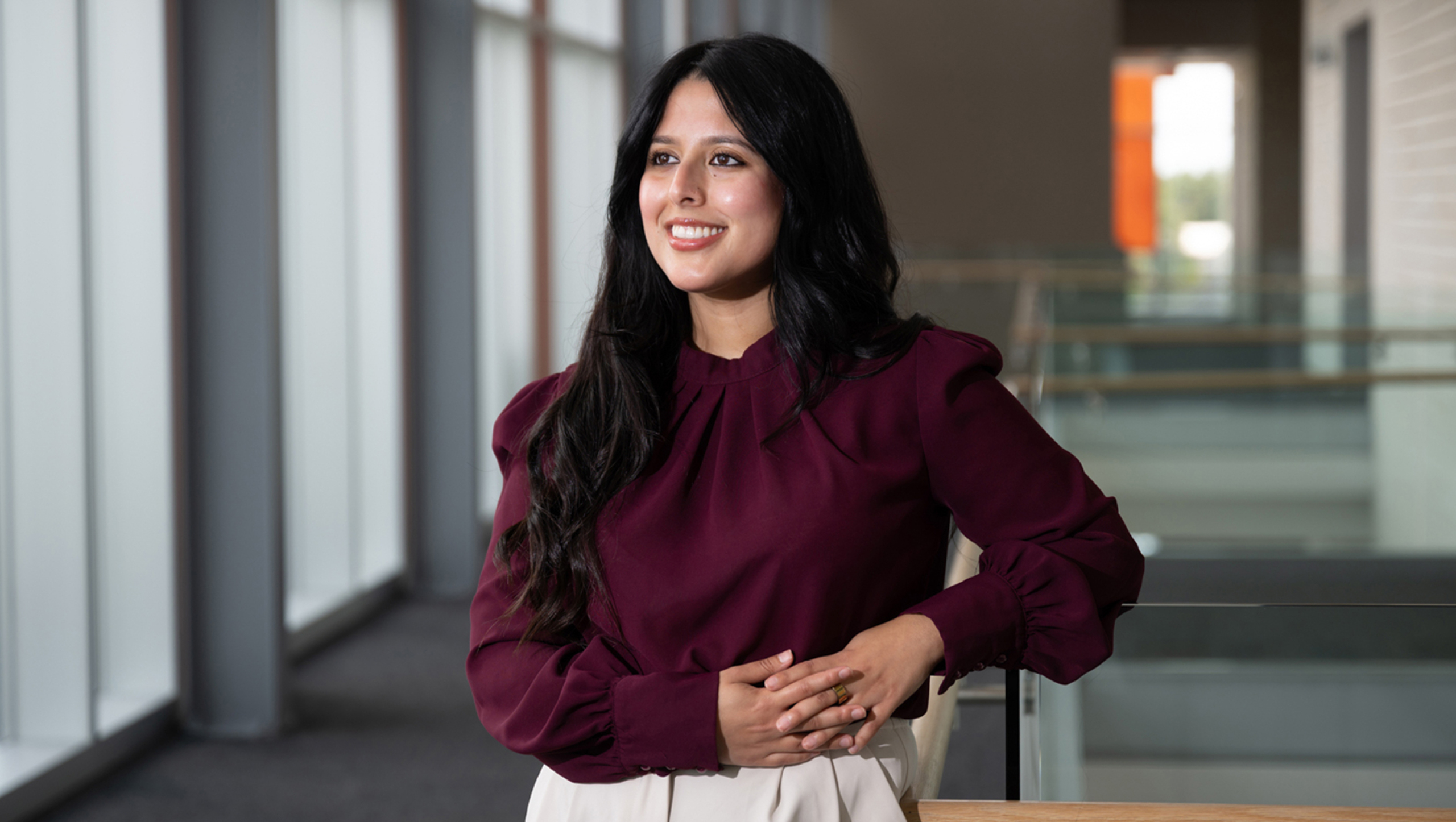For Sujata Ojha, M.D., residency isn’t just a training ground — it’s a launching pad for rethinking what equitable, patient-centered care can look like in Austin.
A third-year internal medicine resident at Dell Medical School and Ascension Seton, Ojha brings with her a perspective shaped by two worlds: growing up in Nepal, then moving with her family to the U.S. at age 11.
Seeing firsthand how different health systems could determine who received care — and who went without — left her with a lasting understanding that medicine is about more than biology. It’s also about systems, circumstances and support. Today, that lesson drives how she shows up in residency — meeting patients where they are, asking what barriers stand in their way and searching for new ways to bridge those gaps. Whether she’s designing systems to raise cancer screening rates in safety-net clinics or helping a patient navigate a complex diagnosis, she’s guided by one unwavering question: How can care truly fit into people’s lives — not the other way around?

Sujata Ojha, M.D.
Q&A With Ojha:
Tell us about your Distinction in Care Transformation project. What do you hope it changes for others?
I am focusing on increasing colorectal cancer screening completion rates at CommUnityCare: Southeast Health & Wellness Center and Walk-In Clinic, a safety-net facility where many of our patients face language, transportation and health-literacy barriers. I designed a two-layered intervention that starts with resident education on screening guidelines, stool-based test options, and patient-centered communication strategies and then paired it with structured outreach to patients who have incomplete tests. Residents review lists of patients, contact them directly by phone or their patient portal and work with clinic nurse to troubleshoot barriers.
I have seen how preventable cancers still claim lives in underserved communities like the one I grew up in. This project brings together my passion for health equity, quality improvement and resident education, and my hope is that we not only raise screening rates locally, but also create a model for resident-driven, equity-focused preventive care that can be adapted in other clinics and specialties.
What’s a moment from your training that challenged you — and what did you take away from it?
During my intern year I met a woman with multiple chronic illnesses and a new cancer diagnosis. Over two years of my continuity clinic rotations, I became her primary care physician while also seeing her in the hematology and oncology clinic during my elective blocks. I managed her diabetes and blood pressure, helped coordinate her oncology care and got to know her family really well. She would bring me updates about her grandchildren, and our visits became about much more than lab values.
Toward the beginning of my third year of residency, she passed away. Losing her was one of the hardest moments of my training. It forced me to confront the reality that even with the best care some patients will die and that the depth of the relationships we build makes those losses feel personal. For a while, I wondered if I was prepared for that part of medicine at all.
What I have learned is to redefine what a “win” means. For some patients it will be a cure; for others it will be an extra birthday party, less pain, a few more months of good quality life. Seeing those small victories, and being invited into patients’ lives so deeply, is what makes this work meaningful to me. It has taught me how to grieve, how to stay present and how to measure success by what matters most to each patient.
What’s a question you find yourself returning to — even if you never quite find the answer?
How do we design systems that don’t just reach people, but truly fit into their lives?
I return to this question constantly. Every missed cancer screening, delayed treatment or patient overwhelmed by logistics is a reminder that access alone is not enough. We can build outreach programs, mail reminders and offer appointments, but if the preparation is confusing, transportation is unreliable or life is already stretched thin, even the best-intentioned efforts can fail. Thinking about this question pushes me to design quality-improvement projects that start with listening: What does the patient actually need to succeed? What does the resident or nurse need to make it easier to help? It has shaped the way I create interventions by focusing on simplicity, clear communication and flexibility rather than assuming an ideal scenario.
Coming back to this question keeps me grounded in why I came to medicine in the first place: to build care that not only reaches people but truly works for them, especially those who are most likely to be left behind.
Graduate medical education, or GME, refers to the period of education in a particular specialty or subspecialty following completion of medical school. This continuation of training through residency and fellowship programs provides the clinical and educational experience needed for physicians to achieve autonomy, deliver high-quality patient care, and prepare for challenges in an evolving health care landscape.
Dell Med serves as the academic home and Ascension Seton as the clinical home for 494 resident and fellow physicians within more than 45 residency and fellowship programs ranging from family medicine and neurology to pediatric emergency medicine and cardiovascular disease.